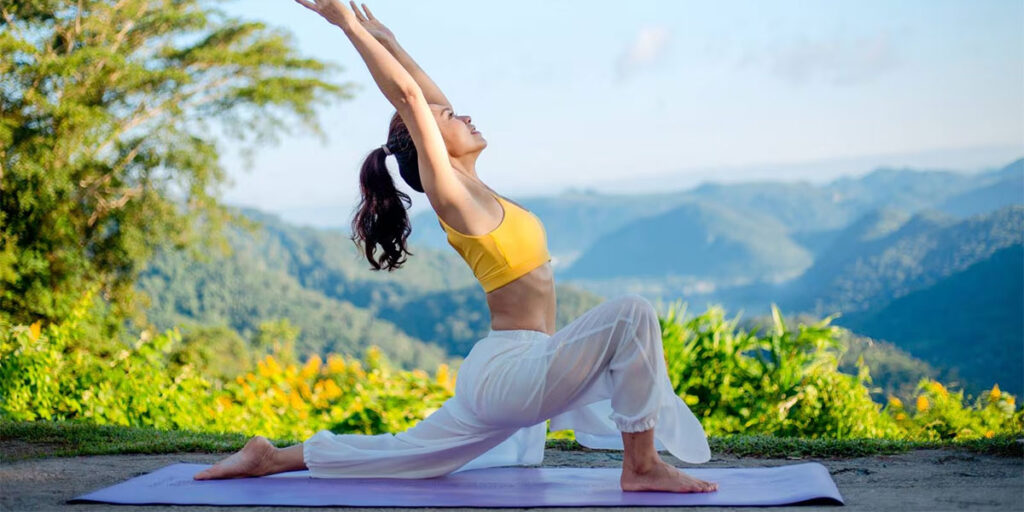09.06.2023 / Leave a Comment
When it comes to practicing yoga, having the right mat is essential. A yoga mat provides a stable and comfortable surface to support your body during various poses and movements. In this article, we will explore the different types of yoga mats, including materials, thickness, and alternatives such as knee pads for yoga on the go. Understanding these options will help you make an informed decision and find the perfect yoga mat for your practice.
1. Materials
Yoga mats are made from a variety of materials, each offering unique features and benefits. Let’s take a closer look at some popular materials:
Natural Rubber Mats
Natural rubber mats are known for their excellent grip and cushioning. They are made from sustainable materials and are environmentally friendly. The natural rubber surface provides a firm grip, even during sweaty practices, ensuring stability and preventing slippage. These mats also offer good shock absorption, providing support and comfort for your joints. However, it’s important to note that some individuals may be allergic to natural rubber. If you have latex allergies, consider alternative materials.
PVC Mats
PVC (Polyvinyl Chloride) mats are widely available and affordable. They offer good grip and durability, making them suitable for various styles of yoga. PVC mats are lightweight and easy to clean. However, it’s important to choose PVC mats that are free from harmful phthalates and other toxic substances. Look for mats labeled as phthalate-free and non-toxic to ensure your safety and minimize environmental impact.
TPE Mats
TPE (Thermoplastic Elastomer) mats are a newer option in the market. They are made from non-toxic and recyclable materials, making them an eco-friendly choice. TPE mats are lightweight, comfortable, and provide good cushioning for your joints. They offer excellent grip and stability, even during intense yoga sessions. Additionally, TPE mats are easy to clean and maintain. If you prioritize sustainability, TPE mats are worth considering.
2. Thickness
The thickness of a yoga mat plays a crucial role in providing comfort and support during your practice. Here are some common thickness options:
Standard Thickness (3-4mm)
Standard thickness mats are a popular choice among yogis. They offer a balance of cushioning and stability, providing adequate support for various poses. Standard mats are suitable for most styles of yoga and are recommended for practitioners of all levels. They offer enough padding to protect your joints while maintaining a firm and stable surface.
Extra Thick (5-6mm)
Extra thick mats are ideal for individuals who require additional cushioning and support, especially for sensitive joints like knees and wrists. These mats provide enhanced shock absorption, making them suitable for individuals with joint issues or those who prefer a more cushioned surface. However, it’s important to note that extra thickness may slightly compromise stability and balance in certain poses that require a solid foundation.
Travel/Thin Mats (1-2mm)
Travel or thin mats are designed for yogis on the go. They are lightweight and easy to fold or roll, making them convenient to carry in your bag or suitcase. While these mats may offer less cushioning, they are great for practicing yoga while traveling or when space is limited. If you prioritize portability and practicing on different surfaces, a travel or thin mat is a suitable choice.
3. Knee Pads as Yoga Mat Alternatives
In addition to traditional yoga mats, knee pads can be a helpful alternative for certain situations. Knee pads are designed to provide extra cushioning and support specifically for your knees. They are particularly useful if you have knee issues or find traditional yoga mats insufficient in protecting your knees during kneeling poses.
Knee pads are typically made of soft and supportive materials such as memory foam or gel. They are portable, lightweight, and easy to carry in your yoga bag or backpack. Knee pads are especially beneficial for individuals with knee issues or those who require extra support during their practice.
Conclusion
Choosing the right yoga mat is crucial for a comfortable and enjoyable practice. Consider the materials, thickness, and your specific needs when selecting a yoga mat. Whether you opt for a natural rubber mat, eco-friendly TPE mat, or prefer the convenience of knee pads for yoga on the go, prioritize comfort, durability, and sustainability.
For more insightful articles on yoga and wellness, visit our blog at Seatwith. Enhance your yoga journey and discover valuable tips and resources to support your practice.
.
Discover Seatwith, a German native D2C brand born to promote sustainable fitness, body and mental health. We offer a range of products for sport, outdoors, and home office, carefully crafted with your comfort in mind. Our brand is all about the ultimate lifestyle experience, helping you live your best life. Check out our collection today and start your journey towards a happier, healthier you!



